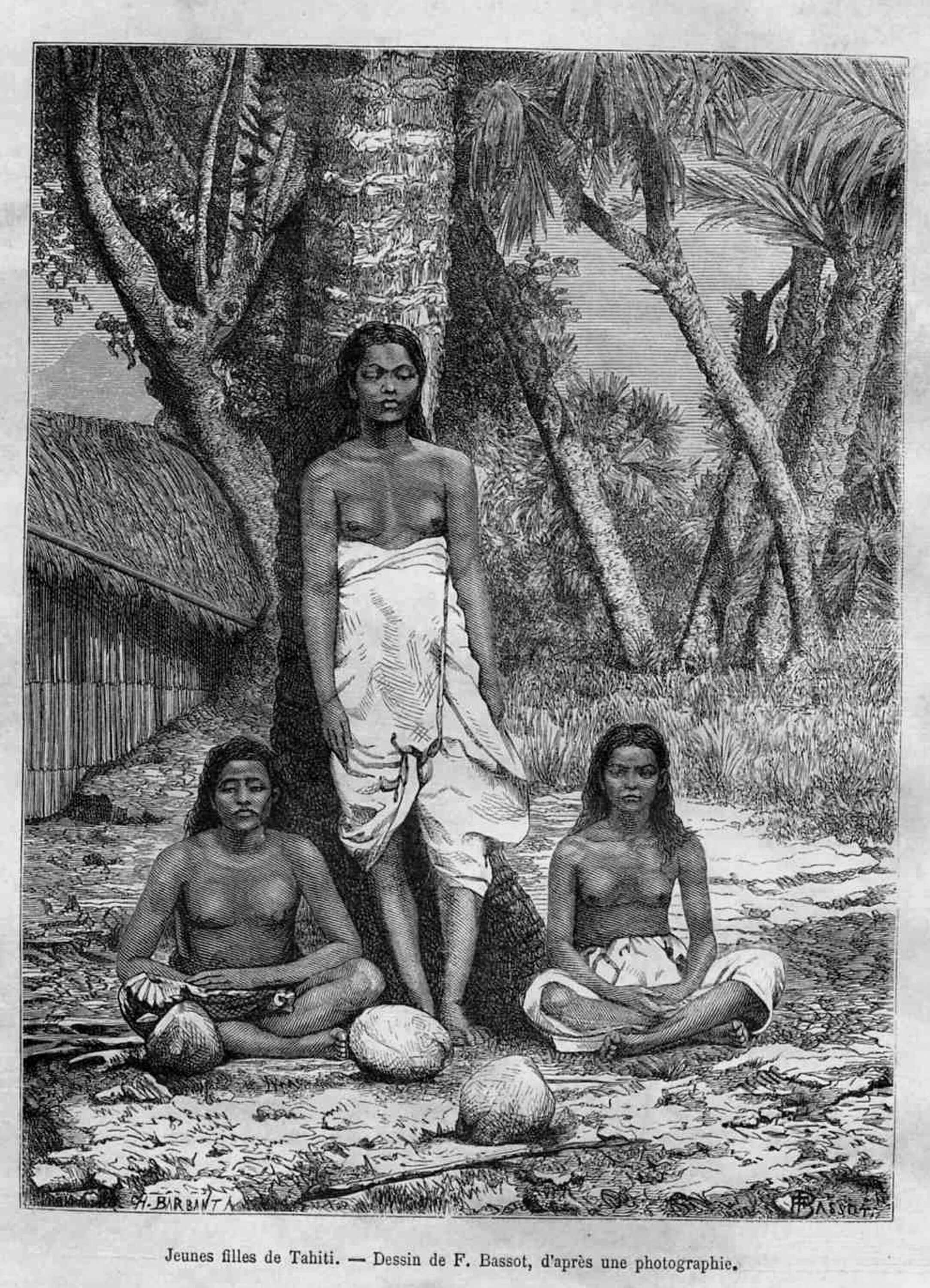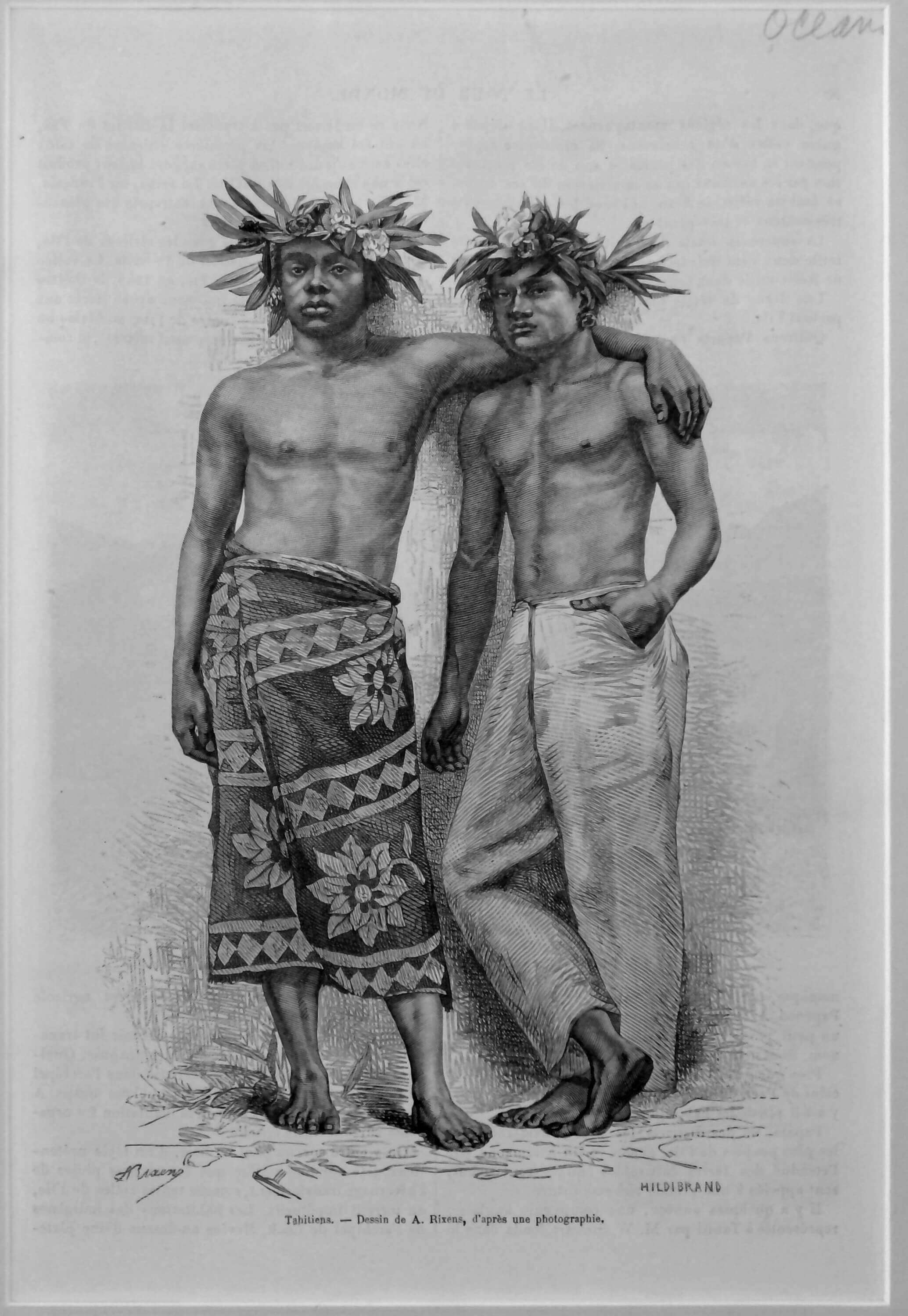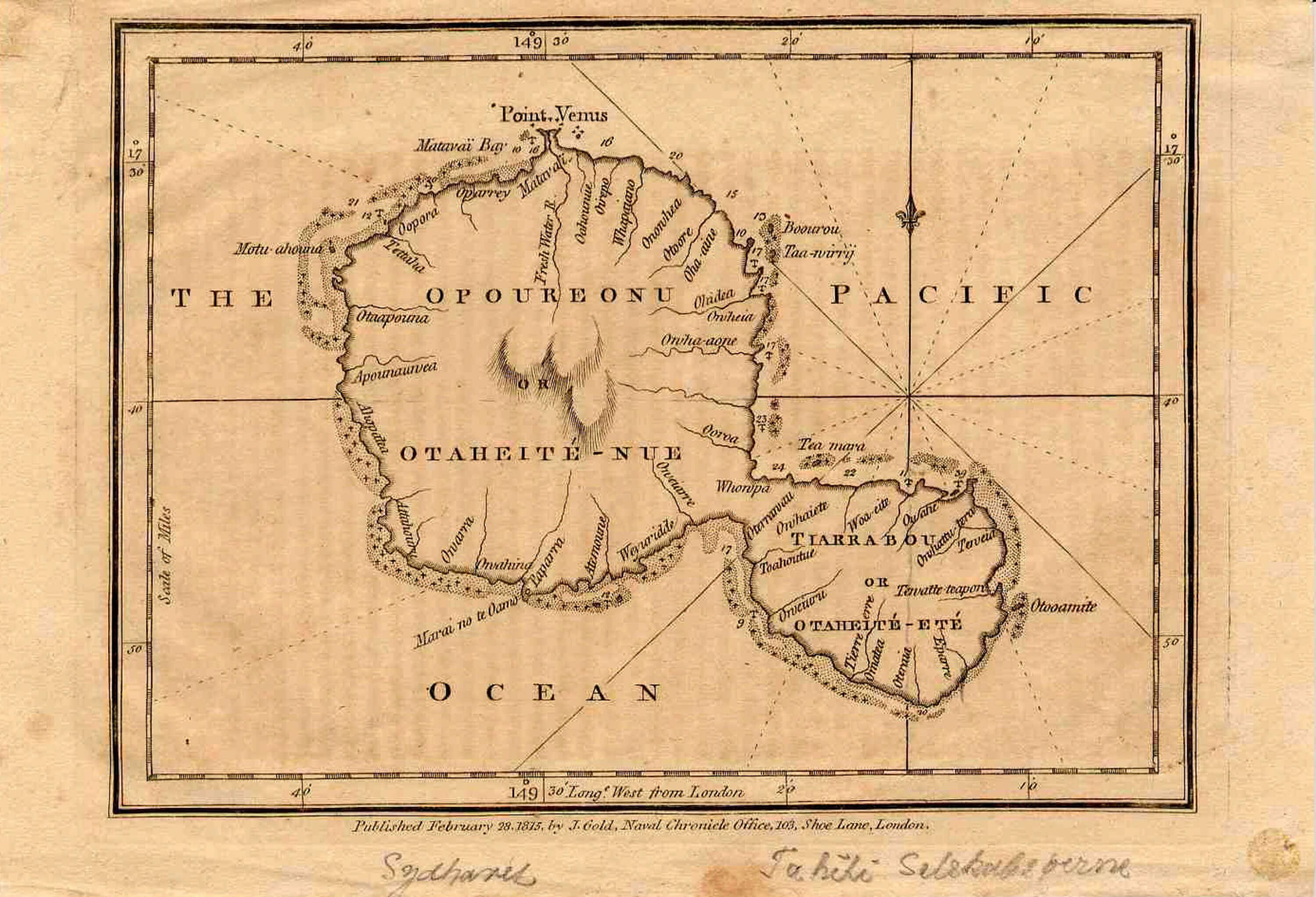“If you were to rise up, like an impossibly elevated albatross, from the centre of the Pacific, the Earth would appear almost entirely blue”.
Philip Hoare
For us western landlubbers, the Pacific Ocean is just a mass of water on the other side of the globe dotted with remote islands. “Islands of ash and coral”, as French traveller Aubert de La Rue had called them.

That’s just what they are: a series of volcanic or coral islands: the “Pacific continent” from the geological point of view. The periphery of the Earth. A “periphery” that we always imagine to be a paradise: in our European imagination, those myriad islands, islets and atolls that extend from the Tropic of Cancer (Hawaii) almost as far as the southern pole (New Zealand) are nothing but an endless blue lagoon where the people wear grass skirts and flower necklaces. Naturally the Pacific – a surface area of 165 million square kilometres, that is, two thirds of the planet and twenty-five thousand islands – is a very different reality, with an infinite variety of states, thousands of different languages, a complex and bloody history made of discoveries – almost always latter-day and random – invasions, colonization and revolutions. Today the Pacific “is an absence” as Nobel prizewinner Le Clézio wrote in an essential book for understanding these places, Raga. Approche du continent invisible (Editions du Seuil, 2006). “Oceania is the invisible continent. Invisible because the first travellers who ventured there did not grasp their nature, and because still today it is a place without international recognition, a passage”.

According to Le Clézio the great misunderstanding stems from having been considered the land of the last adventurers, while in reality it was but the “largest battlefield in history”. Everyone has come into dispute here: the French and British in the eastern Pacific; the Australians, New Zealand and Tasmania to the south; the Americans to the north; the Dutch and Germans in the Sunda Islands; and the Japanese in all the rest. All of this conquering and planting flags has made the continent divided, fragmented and therefore “invisible”. The south islands have been plundered, the sandal woods razed to the ground, the whales fished without limitation, the turtles exterminated, and the men made into a reservoir of slaves – with the excuse of the blackbirders, a sort of voluntary servitude. So the islands of paradise soon became an inferno of galley slaves and prostitutes. And, in more recent times, an ideal place for open-air nuclear tests, like the famous Mururoa trial. Does a Pacific consciousness exist today, Le Clézio asks himself? The common fight against the colonial powers seems to have created bonds between peoples, economic ties first of all, but also memories and ancient traditions: music, dances, masks, tattoos, myths telling of long voyages across the boundless ocean. Because this is precisely where Oceania’s uniqueness lies, in that it has been populated by men who faced incredible odysseys, long migrations across the sea. And they did it in simple, very resistant boats that are still used today (10,000 years later!): the legendary outrigger canoes.

A relatively “recent” invasion, suffice to think that the indigenous (Austronesian) populations only arrived in the Solomon Islands in the year 1200: before then no human being had ever set foot on these islands. And the occupation of the Chatham Islands dates from 1400, a century before the arrival of the Europeans. Some areas of the Pacific are still among the least explored on the planet, some oceanic abysses, writes Philip Hoare in his magnificent The Sea Inside (Melville House), are “less mapped than the moon”. And three quarters of the animal species still have to be studied and catalogued. Despite this, Hoare recounts, the Pacific Ocean contains the most ancient waters in the world, because the submarine currents are so slow that the oxygen has been stuck there in the intermediate layer for thousands of years.
Many scholars, the great majority of whom French or Australian, have written about the Pacific: anthropologists, geographers, historians, volcanologists and travellers. We go from O.H.K. Spate, author of the monumental The Pacific Since Magellan (3 vols, Croom Helm/Routledge), to the more recent Storia dell’Oceania. L’ultimo continente by Giusti-Sommella-Cigliano (Donzelli), from the legendary traveller Robert James Fletcher, who wrote his Isles of Illusion in 1923, to Jean Guiart, ethnologist and oceanographer, who dealt almost exclusively with Oceania. There is naturally Paul Gauguin who made Tahiti, and then the Marquesas Islands, his atelier. Noa Noa (Classic Books America, 2009) is the painter’s diary – written with the help of his poet friend Charles Morice – an unexpectedly delicate book in which Gauguin writes of myths, tales, scents and the locals’ grace. Gauguin tells of the “generous and hospitable instincts of the Oceanian soul” and underlines the “constant” and “vivifying” spectacle of death experienced by these populations. Gauguin, accused perhaps rightly of paedophilia for loving a 13-year-old Polynesian, reveals that prostitution in Tahiti was however a “sacred duty”.

After the arrival of the “civilizing” Europeans, the painter continues, prostitution would no longer be “obligatory”, but it would thrive all the same. Disillusioned by the “beneficial” changes brought by the Europeans, the great artist moved to the Marquesas Islands, fighting alongside the islanders against the usurpations of the French authorities. Gauguin is buried in Hiva Oa, near the tomb of Jacques Brel.
“By their very nature, remote islands are prisons, especially those in the Pacific,” said Judith Schalansky author of Atlas of Remote Islands (Penguin). “They are surrounded by the walls of an obstinately present sea; far from the trade routes, they are the perfect places for collecting everything that is undesired, anomalous. And in those little continents, far from the eyes of the world, it is easy to breach international rights. Just think of the mysterious deaths of children on St. Kilda, or the custom of killing children on Tikopia.” Reality and fiction seem very much inextricable when we talk of the Pacific Ocean: from the catastrophe films like Pacific Rim (2006) to the three different versions of the legendary Bounty. Perhaps it is the sense of unexpectedness, secrecy and inaccessibility of certain places. But the Pacific lends itself perfectly to literature, thanks above all to the moral ambivalence of these such extreme scenarios, which are almost always “at the limit”. In Rain by Somerset Maugham – the short story that perhaps better than all rest condenses the unhealthy draw of the South Seas – two memorable characters come face to face: a missionary who has arrived on the islands to “instil into the natives the sense of sin” and a prostitute fleeing from her past whom the reverend tries, in vain, to convert. Maugham is an ingenious observer of the exotic otherness of these places, and the existential and moral otherness of his characters. Like in all of Maugham’s “Oceanic” stories – his first tales Honolulu (1932), the unforgettable novel The Narrow Corner (1932), the famous The Moon and Sixpence, which recounts the story of Gauguin in Tahiti as a novel, and naturally South Sea Stories (which contains Rain) – there is always a sinister consonance between the characters’ evilness and the islands’ tempestuous and savage nature. Because if paradise is an island, hell is too.